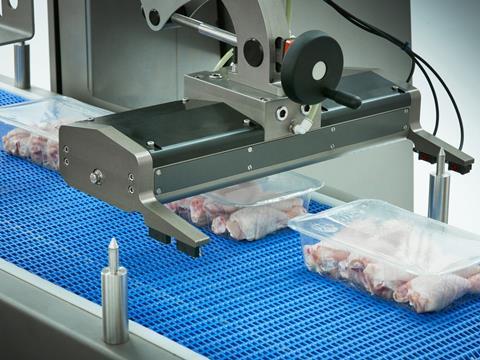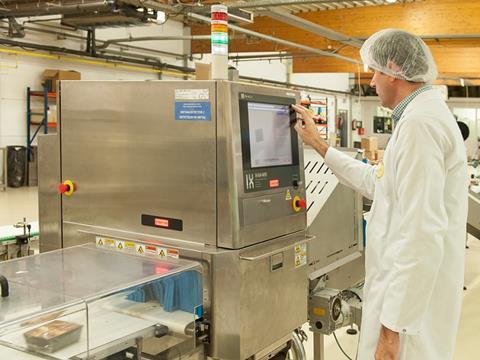
Packaging equipment can play a crucial role in preventing and minimising food waste, Ulrich Nielsen (Ishida Europe’s solutions sales director) tells Packaging Europe.
Food waste and its environmental impact have become a major focus in the ongoing sustainability debate. One third of all food produced globally is wasted or lost annually – some 1.3 billion tonnes. Of this, one third is lost after purchase by the consumer.
Packaging has a key role in helping to minimise food waste – protecting and preserving it throughout the supply chain and at the place of consumption. It can also respond to changing demographics. In the UK, for example, the Office for National Statistics has reported that 63% of households now contain just one or two persons. This has driven the development and introduction of smaller and segmented packs, which allow for effective portion control.
However, such pack formats bring with them additional challenges, as they can be more expensive to produce. This further underlines the importance of maximising efficiencies during production and packing to help keep costs down.
At the same time, although much of the focus on food waste - in the Western world in particular - is on consumer behaviour and our tendency to buy too much or to throw products away unnecessarily, this is clearly only part of the problem.
If just one third of food waste occurs after the consumer has purchased it, then the problem of food lost from production to the retailer is twice as bad and also needs addressing.
The potential for waste during production and packing can take many forms. If a pack is not sealed properly, it can lead to food deteriorating before it reaches the retail shelf. Contaminants in the pack will cause the food to be rejected by the consumer. In the worst-case scenarios, such problems could result in a complete product recall.
Food spoilage is also not the only quality issue when it comes to waste. A pack with missing items, for example five biscuits where there ought to be six, may be returned by the consumer. Packs containing deformed product, such as a beef burger that has not been shaped properly, also run the risk of being rejected. Inconsistencies in a pack – being underweight or not containing the ingredients in the ratio expected - can similarly lead to complaints and returns.
Equally significant, as well as unnecessary food waste, any such problems can have serious commercial implications for a business. A quality problem or product recall may have a detrimental impact on a brand’s reputation. A product withdrawal or recall will also incur major costs, as well as the potential for a hefty retailer fine.
Investing in the appropriate packaging equipment is therefore critical, both to prevent these problems from occurring in the first place and to minimise their impact if they do.
The latest multihead weighing systems will ensure pack weight accuracy and pack content consistency; checkweighers provide a final confirmation of this accuracy and will highlight any problem that might have occurred during the weighing, filling and packing operation.
To minimise the cost implications if any such problems are detected, the position of the checkweigher can be critical. For example, in the packing of fresh products such as meat or poultry, if the checkweigher is positioned before the sealing operation, then both product and pack are easily removed for repacking. However, if the tray is already sealed and labelled by the time the weight problem is identified, costs can start to escalate to cover the labour required to unpack the product, the waste of the packaging materials and the possibility of damaging the product during this exercise.

For the detection of foreign bodies in a pack, X-ray inspection systems offer the versatility to identify metal, plastic, glass, stone and hard rubber down to very small sizes. In addition, they have the flexibility to check for quality issues such as missing items or deformed or broken products.
Again, where they are positioned on the line will be important. For many quality checks, the system will need to X-ray the complete pack. However, in some applications, monitoring of individual components can be beneficial. For a retorted ready meal, where various ingredients are added individually, by X-raying the key ingredient streams separately, the cost of any discovered contamination will only affect that single ingredient; if the pack is only inspected after all the ingredients have been added and the meal cooked, the entire contents will be wasted, and there will be further additional costs in the wasted packaging and the energy expended in the cooking.
To minimise food spoilage, a well-packaged product will help to maintain freshness and deliver the longest shelf life, be that for a tray, bag or pouch. The use of gas flushing in tray sealers creates MAP packs (modified atmosphere packs) that help to preserve fresh foods. New technologies are also being introduced, such as skin packing for meat and fish where the tray film is placed tightly around the product to prevent any air getting to it. This delivers extended shelf life without the need for gases.
It is, nevertheless, extremely important that the integrity of these packs is also monitored. This is particularly vital in today’s automated operations with little human intervention to spot a problem, for example if product has been trapped in the seal. In addition, tiny holes in a film will not be visible to the naked eye but are enough to let air in and cause early product deterioration.
For effective inspection of each pack, seal testers ensure the integrity of top sealed, thermoformed, flow-wrapped or lidded trays in different materials and sizes by applying controlled pressure to each pack going across a conveyor in order to detect any unwanted ‘give’. In addition, a recent innovation in the field of in-line leak detection is the use of laser technology which enables leaks of CO2 from holes as small as 0.25mm in MAP packs to be ‘’sniffed out’’ directly on the line, without stopping production and at an impressive speed of 180 packs per minute.
As the testing process is very gentle, both of these technologies further minimise food waste, so that product can be saved and re-packed.
Mis-labelling can be another cause for a product recall. As part of tray sealing checks, vision systems are able to verify the accuracy of a label, ensure that it is positioned correctly and relate the overprinted data to a company’s information systems to check that dates, weights, prices and barcodes are present, correct, legible and in the place they should be.
This information can also form part of a comprehensive traceability system. In the event of a problem, a single number on the pack can identify all the relevant information about the product. Data such as the gas mix, X-ray checks, checkweigher and vision system results, and even the crate it was packed in, can all be easily accessed. This means that any recall can be extremely focused, minimising both costs and the potential damage to brand reputation in the eyes of the retailer and the consumer. Such detailed information also helps to counter and prevent any fraudulent claims.
The key priority for food manufacturers and processors will always be on maximising throughput and efficiencies to help businesses keep ahead in crowded and competitive markets. As part of this, effective quality control is vital to maintain brand reputation and be viewed as a reliable supplier. Investing in the best packaging equipment is critical to achieving this.
At the same time, every 30 minutes 74,000 tonnes of food is being lost. If the use of this equipment can also help to deliver a 1% saving in both consumer and food industry wastage, that would amount to an annual saving in food waste of 13 million tonnes.
That would deliver the perfect win-win situation.















